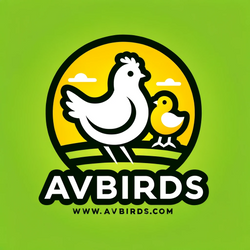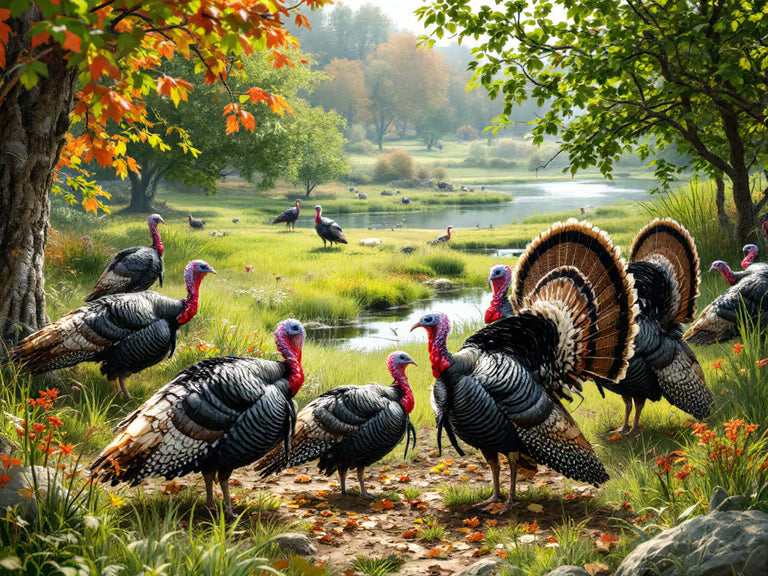If you’re planning to raise a live turkey for Thanksgiving in California, you’re curious how your bird behaves. Knowing live turkey behavior characteristics helps you spot hunger, stress, or when your bird needs extra care. Let’s walk through feeding, social, vocal, and grooming habits so you can read your turkey’s cues with confidence.
Observe Feeding Patterns
Have you noticed your turkey scratching around at dawn? Turkeys forage heavily in the morning and late afternoon (NWTF). Young poults focus on small insects like beetles and grasshoppers, while adults eat a mix of seeds, grains, fruits, and nuts. For a deep dive, check our live turkey feeding guide.
Typical food items include:
- Small insects: beetles, grasshoppers
- Grains and seeds: corn, wheat, millet
- Fruits and nuts: acorns, berries
Your turkey uses keen vision and hearing to find food. They scratch soil with their feet, exposing hidden treats. Watching these patterns helps you adjust feeding times and spot health issues early.
Identify Social Interactions
Turkeys are social flock birds. In a backyard flock you may see hens and young birds grouping together, while toms mix in during mating season (Midwest Outdoors). Pecking orders establish who eats first, who roosts closest to the door, and even who wins turf disputes.
Key social behaviors include:
- Grouping: hens form stable flocks; poults stick close to mother
- Pecking Order: gentle pecks or brief skirmishes set the hierarchy
- Spring Assemblies: males strut, drum, and compete for hens
Understanding these interactions keeps your flock peaceful and helps when you introduce new birds to the group.
Interpret Communication Cues
Your turkey talks more than you might think. Both gobblers and hens use vocalizations and body language to share messages. Here is a quick reference:
| Call | Meaning | When To Expect |
|---|---|---|
| Gobble | Territorial or mating signal | Spring mornings |
| Cluck | Invitation or reassurance | All year |
| Purr | Contentment among feeding birds | During foraging |
| Putt | Alarm or caution | When startled |
| Kee Kee Run | Lost poult or reunion call | Fall gatherings |
Learning these cues helps with safe live turkey handling for thanksgiving and can improve your bond.
Support Grooming Rituals
Here’s the thing, turkeys spend a chunk of their day on personal care (NWTF). Clean feathers mean better insulation and flight readiness. You will often see:
- Dust Bathing: crouching in dirt then flapping wildly
- Sunning: lying on one side to absorb warmth
- Anting: rubbing on ant mounds to deter parasites
- Preening: aligning each feather and spreading oil from the preen gland
- Stretching and Fluffing: loosening muscles and reshaping plumage
Encouraging natural grooming maintains health and reduces feather damage. Read our live turkey care for thanksgiving tips for more.
Plan Roosting And Rest
Wild turkeys roost high in trees to avoid predators (NWTF). In your backyard flock you still need safe, high perches. Aim for:
- Sturdy roosts at least 4 feet off the ground
- Enclosed coop area to block drafts and provide shelter
- Enough space per bird to reduce tension
Manage Environmental Needs
A wild turkey’s home range can span 370 to 1,360 acres (NWTF). While your flock won’t free range that far, they still need room to roam. In California’s heat provide:
- Shaded areas and misting fans when temperatures climb
- Fresh water stations placed around the run
- Gravel or sandy patches for dust bathing
Also check live turkey regulations in california to ensure you meet local space and zoning rules. Keeping the right environment cuts down on heat stress and keeps your flock happy.
Recognize Stress Signs
Stress not only affects turkey mood but meat quality too. In research heat stress led to lower protein content and toughness in turkey breasts (PubMed Central). Watch for:
- Heavy panting or open-mouth breathing
- Lethargy and reduced foraging
- Loss of appetite
- Increased aggression or repeated pecking
- Ruffled or soiled feathers
To reduce stress, maintain temperatures below 85°F, offer electrolyte water, and keep housing clean. Visit our live turkey health tips for thanksgiving for more.
Next Steps For You
You now know the key behaviors of your live turkey. Next up, take action to set your flock up for success:
- Explore a local live turkey farm in california to source birds
- Dive into raising live turkeys for thanksgiving for full care guidance
- Check out avbirds.com on thanksgiving turkey and turkey poults and hatching eggs
Have you spotted these behaviors in your flock? Share your observations in the comments so everyone can learn.

